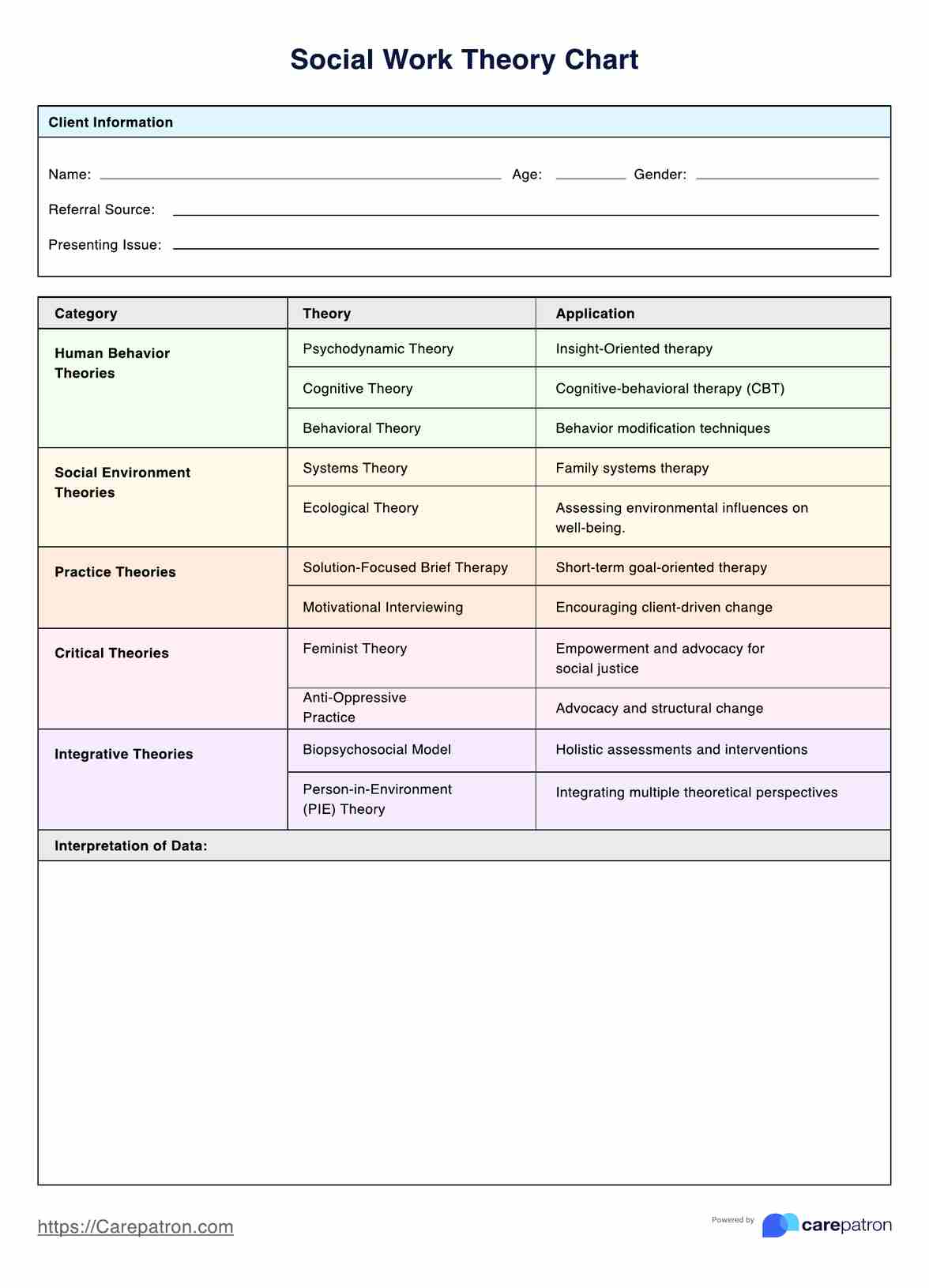Social learning theory, which focuses on how people learn through observing others, significantly shapes social work practice models. It informs social workers on how clients can adopt positive behaviors and coping strategies by observing good examples in their environment. This theory underscores the importance of role modeling and mentoring in fostering personal growth and everyday behavior change.

Social Work Theory Chart
Discover the benefits of Social Work Theory Charts. Enhance decision-making, collaboration, and client outcomes with these valuable tools.
Social Work Theory Chart Template
Commonly asked questions
Systems theory and ecological systems theory are fundamental in helping social workers comprehend the intricate network of relationships and external factors in a client's life. These theories emphasize the importance of considering multiple environments, including family, social, and community contexts, when assessing client needs and developing interventions. They provide a framework for understanding how various systems interact and influence an individual's behavior and mental health.
Social exchange theory and rational choice theory are applied in social work to understand the motivations behind a client's actions. These theories suggest that clients often weigh the costs and benefits of their actions in social interactions. Social workers can use these insights to help clients explore safe alternatives and make decisions that lead to positive change and seek gratification in a healthy way.
EHR and practice management software
Get started for free
*No credit card required
Free
$0/usd
Unlimited clients
Telehealth
1GB of storage
Client portal text
Automated billing and online payments











